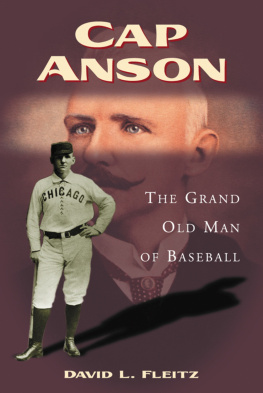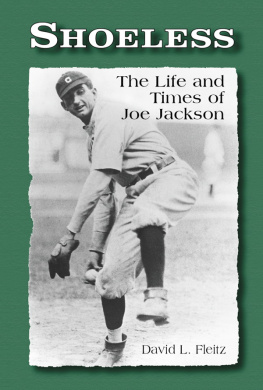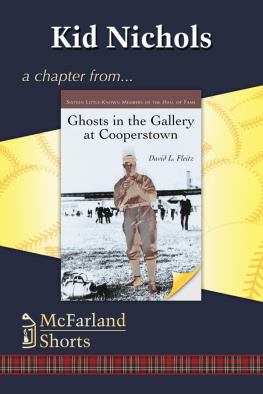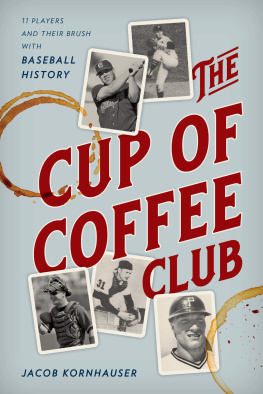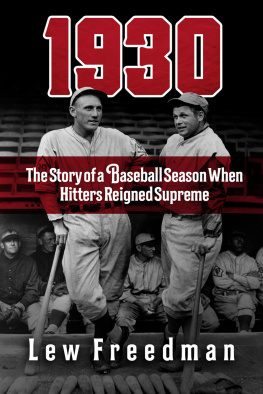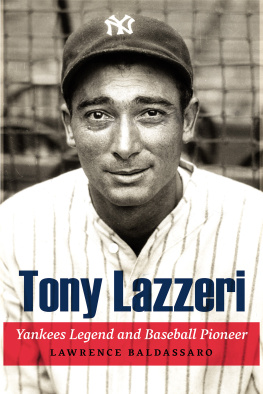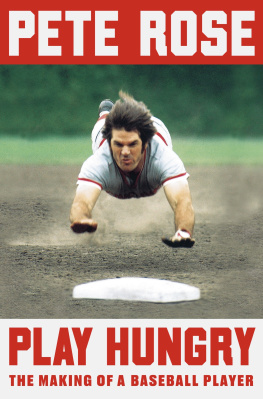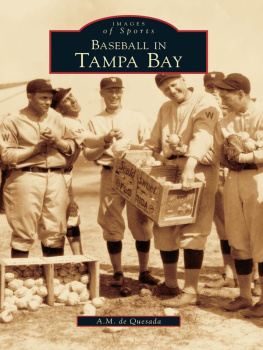
Also by DAVID L. FLEITZ
AND FROM MCFARLAND
The Irish in Baseball: An Early History (2009)
Shoeless: The Life and Times of Joe Jackson(2008, large print edition; paperback 2001)
More Ghosts in the Gallery: AnotherSixteen Little-Known Greats at Cooperstown (2007)
Ghosts in the Gallery at Cooperstown:Sixteen Little-Known Members of the Hall of Fame (2004)
Louis Sockalexis: The First Cleveland Indian (2002)
Cap Anson
The Grand Old Man of Baseball
DAVID L. FLEITZ

McFarland & Company, Inc., Publishers
Jefferson, North Carolina, and London
LIBRARY OF CONGRESS CATALOGUING DATA ARE AVAILABLE
BRITISH LIBRARY CATALOGUING DATA ARE AVAILABLE
e-ISBN: 978-1-4766-1267-6
2005 David L. Fleitz. All rights reserved
No part of this book may be reproduced or transmitted in any form or by any means, electronic or mechanical, including photocopying or recording, or by any information storage and retrieval system, without permission in writing from the publisher.
Cover images: (foreground) Cap Anson in his Chicago uniform (National Baseball Hall of Fame Library, Cooperstown, New York); (background) Anson in 1887 (authors collection)
McFarland & Company, Inc., Publishers
Box 611, Jefferson, North Carolina 28640
www.mcfarlandpub.com
Acknowledgments
I would like to thank a few people without whom this book would not have been possible.
The online archives of the University of Notre Dame proved helpful, and David F. McCartney, Denise Anderson, and the archivists at the University of Iowa were generous with their assistance. So were Ralph Christian of the Iowa Historical Society and Carole Winkleblack of the Marshalltown (Iowa) Public Library.
Bill Burdick and the staff at the photographic department of the National Baseball Library in Cooperstown, New York, offered helpful assistance in rounding up photographs for this book, as did Mark Rucker of Transcendental Graphics. The Eugene C. Murdock collection of baseball books and materials at the Cleveland Public Library was invaluable, and Eric Enders of Triple E Productions provided valuable research information. The SABR (Society for American Baseball Research) Lending Library, my source for microlmed copies of The Sporting News and Sporting Life, was a great help, and the ProQuest online newspaper archive, offered by SABR to its members, opens up new horizons in baseball research. This book would have taken much longer to write without it.
I would also like to thank my wife Deborah for her editing skills and moral support.
Introduction
I enjoy reading baseball biographies.
I like all kinds of historical works, but I have been a baseball fan since I was a child, and have always been interested in the life stories of baseball personages.
The rst baseball biography I ever read was The Babe Ruth Story, which was dictated by Ruth to sportswriter Bob Considine in 1948, mere months before Ruth died. Many more books on Ruth have appeared since then, and the total number of Babe Ruth biographies is probably over 100 by now. I also read Ty Cobbs book My Life in Baseball: The True Record, along with several other works on Cobb by Charles Alexander and others. The lives of later ballplayers, including Ted Williams, Mickey Mantle, Henry Aaron, and many more, have been detailed in literally hundreds of books.
However, there is one long-ago player who seems to have escaped public recognition entirely. Adrian Constantine (Cap) Anson was, without a doubt, baseballs rst superstar, the outstanding performer of the rst three decades of major league baseball. He was the rst player to make 3,000 hits, and posted a batting average of .300 or better in 24 of his record 27 seasons. He won four batting championships, led the National League eight times in runs batted in, and was the most dangerous hitter of his era. Anson was the man who set all the career batting records (for hits, runs scored, games played, times at bat, doubles, and runs batted in) that Cobb, Ruth, and others now hold. He was almost unanimously recognized as the greatest rst baseman in the games history until the 1930s, when Lou Gehrig of the New York Yankees surpassed him in the esteem of the nations sportswriters.
Anson spent 22 seasons with the Chicago White Stockings, the National League team now known as the Cubs. For 19 of those 22 years, he served as manager of the ballclub, leading it to ve pennants and four second-place nishes between 1879 and 1897. He won more games and more league championships than any other manager of the 19th century, and dened the role for all who followed. Anson was baseballs greatest player and its most successful manager, simultaneously. If San Francisco Giants star Barry Bonds, baseballs outstanding hitter of the present day, had also managed the Giants to ve pennants, he would be as dominant a force in the game as was Cap Anson more than 100 years ago.
More importantly, Anson played a major role in establishing major league baseball as a permanent part of the American scene. He came of age when professional baseball was in its infancy, struggling for survival against such potentially fatal threats as gambling, player dishonesty, fan violence, and nancial pressures. Cap Anson was baseballs biggest star, and his popularity drew legions of fans to the sport and helped to make a mere bat-and-ball game into the national pastime of a growing nation.
Cap Ansons life encompassed many interesting events. He took to the stage and headlined a Broadway play, one which was written to take advantage of his fame. He was present at the rst public performance of Casey at the Bat, the most famous piece of baseball literature ever produced. He participated in baseballs rst tour of England in 1874, and 14 years later helped organize a round-the-world excursion that introduced the sport to Australia, Egypt, Europe, and other far-ung outposts. He was elected to political office after his baseball career ended, and spent his later years touring the vaudeville circuit. Anson also, regrettably, vehemently opposed the presence of African-Americans in baseball, and played a major role in the segregation of the game during the 1880s.
Surprisingly, only one biography of Cap Anson has ever been published, and that was produced by Anson himself in 1900. Titled A Ball Players Career, it was the rst baseball autobiography. More than 100 years have passed since anyone else has attempted to create a full-length work on the life of baseballs rst great player. I believe that Cap Ansons interesting and eventful life deserves a new biographical treatment, and this book is the result.
David L. Fleitz
June 2005
CHAPTER 1
Beginnings
Looking back over my youthful experiences I marvel that I have ever lived to relate them, and that I did not receive at least a hundred thrashings for every one that was given me. I know now that I fully deserved all that I received, and more, too.
Adrian C. Anson, 1900
Adrian (Cap) Anson, the hard-hitting rst baseman and pennant-winning manager of the Chicago baseball team now known as the Cubs, is the most famous person ever born in Marshalltown, Iowa. He was the son of the founder of the town, and lived there for the rst 18 years of his life before he set out to nd success as a professional athlete, a journey that took him to Chicago and, eventually, to the Baseball Hall of Fame in Cooperstown, New York.
Next page
